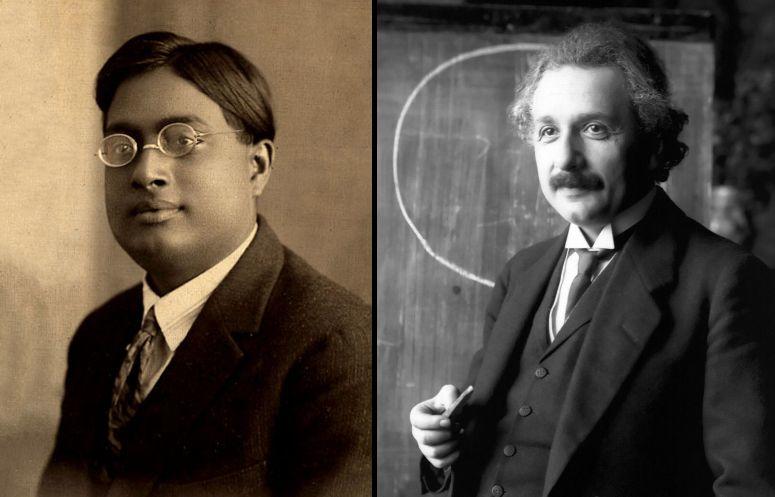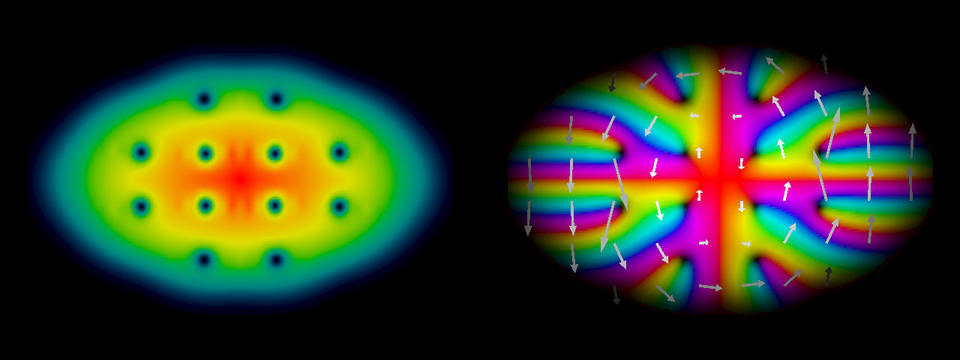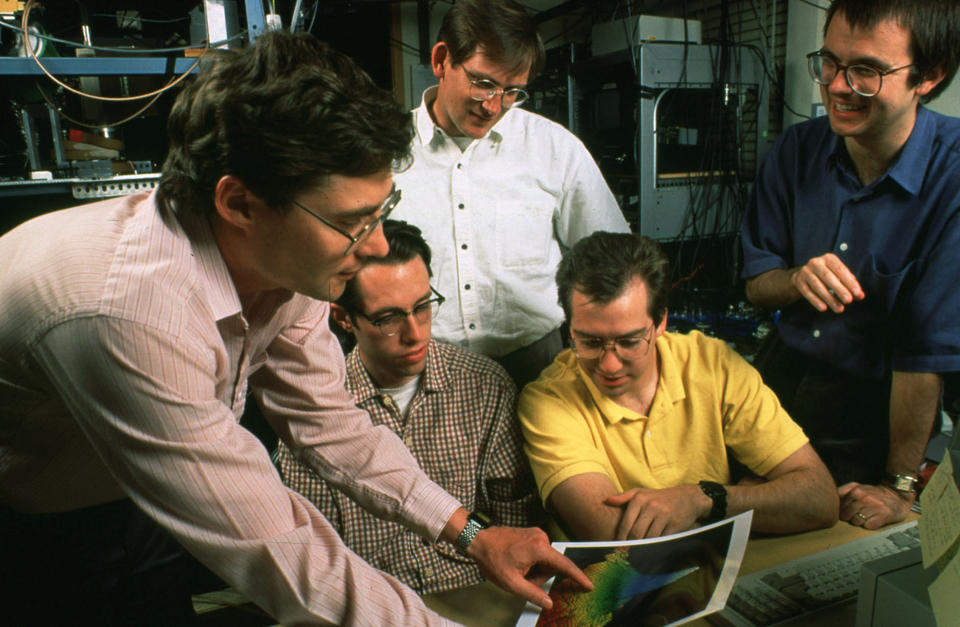Context of a Discovery: Eric Cornell
For more than seven decades, Bose condensation of atoms was yet another of the bizarre predictions coming out of the minds and equations of theoretical physicists. The story begins in 1924, when Indian theoretical physicist Saytendra Nath Bose showed how photons—particles of light—could join together in a single quantum state.
All the known particles in the universe fall into one of two categories. Photons belong to a class of particles that have come to be known as “bosons,” derived from Bose’s last name. “Fermions” comprise the other class of particles; an example is the electron. (They are named after Italian physicist Enrico Fermi, who developed a theoretical description of such particles.)

Unable to get his paper published, Bose sent it to Albert Einstein, who immediately recognized the work’s value, helped to get it published and extended it in 1924 and 1925 to bosonic atoms. Einstein predicted that a swarm of atoms, if close enough together and at a cold enough temperature, would coalesce into a single “superatom.” Each would become indistinguishable from its peers and form a single quantum wave.
Were such a creation to exist, quantum behaviors typically seen only in some of the nature’s tiniest structures would expand into the macroscopic realm for scientific study and, possibly, practical application. But the required temperature was far lower than that reached by any experimentalist in the 1920s. The Bose-Einstein condensate remained a theoretical curiosity until 1976, when physicists William Stwalley, then at the University of Iowa, and Lewis H. Nosanow, then at the National Science Foundation, theorized that hydrogen atoms that were all given the same spin might, under the right conditions, collapse into a BEC.
Groups in Europe and the United States, including one led by MIT physicist Daniel Kleppner, pursued this approach using “cryogenic” refrigerators that could reach very low temperatures, with liquid helium as a coolant. Their experiments were technically complex, consuming two-story laboratories. And they immediately faced huge challenges: Creating a BEC with a workable density of gas atoms would demand temperatures of less than roughly 200 nanokelvin, or billionths of a degree above absolute zero (-273 degrees Celsius, or -459 Fahrenheit), at which nearly all atomic motion theoretically stops. Going lower than millikelvins, or thousandths of a degree above absolute zero, becomes impractical with liquid-helium refrigerators. A BEC would also require squeezing and cooling a vapor of atoms in such a way that the atoms would resist congealing into a solid as nature normally commands.
As Kleppner pursued a cryogenic hydrogen BEC, scientists in other labs were dramatically advancing the field of laser cooling and trapping. The emerging tools of experimental atomic physics provided a much more precise and effective alternative to cryogenics in drastically slowing atoms’ motion and causing them to enter a BEC state.
Wieman used the new laser cooling and trapping techniques to chill atoms to ultralow temperatures approximately one hundredth the value of previous records.

So when Cornell joined Wieman in 1990, they set about developing a new approach to creating ultracold atoms, using laser cooling to achieve much colder temperatures than other groups had.
“People had been trying to take fairly cold atoms and really squeeze them together to get the product [of coldness and density] to be the necessary level. I realized that, based on seeing all their failures and struggles, it would be better to take the atoms and keep them not very dense, and…take advantage of the laser cooling we could do to start with much colder atoms,” says Wieman. “We used to joke about taking the ‘low road’ of temperature to BEC in contrast to everybody else taking the ‘high road’ of density.”
Rather than using $150,000 tunable dye lasers, they adapted $200 semiconductor lasers similar to ones in commercial CD players. They used a carrot-sized fused-glass vacuum chamber rather than a stainless-steel bulwark, which in turn allowed magnets for atom trapping to reside outside the vacuum chamber, making them easy to adjust. They bought cooling coils at the local hardware store. They adapted laser cooling and trapping techniques pioneered by Bell Laboratories physicist Steven Chu, NIST Fellow Bill Phillips and others. The setup, described in a Boulder Daily Camera story as looking “like under the kitchen sink,” cost roughly $50,000, a very economical budget for groundbreaking experimental physics.
The simplicity and low cost made it easy to test different approaches, which was helpful for scientists trying to achieve something no one had ever done.
“We would try this sort of magnetic trap, that sort of magnetic trap, this sort of imaging, that sort of imaging, that sort of cooling,” Cornell recalled in a 2008 interview with PBS. “All those things we could do without building a whole new chamber each time. We tried, literally, four different magnetic traps in four years, instead of having a three- or four-year construction project for each one.”
Even though they were spending nearly all their time on the experiment, Cornell and Wieman suspected that the hydrogen groups, with their 15-year head start, would beat them to the BEC punch. But they believed that, should their approach succeed, it would help scientists create low-cost BECs at laboratories around the world.
“We didn’t want it to be something where we crossed the finish line and then dropped in a heap,” Cornell says. “We wanted to make the Bose-Einstein condensate and then do stuff with it.”
After settling on their laser cooling and magnetic trapping scheme, Cornell’s and Wieman’s next step was to choose which atom to work with. Cornell chose an isotope known as rubidium-87, less because they were sure it was the best atom than because they could use many of the same optics left over from their earlier work with cesium, which responds to a similar color of laser light. In addition, rubidium has another isotope, rubidium-85, so if the first isotope didn’t work out, they could easily switch, Cornell says.

When Cornell got his own lab in 1992, he designed his experiments around the rubidium atom. He set up his lab similarly to Wieman’s, and they split the experimental load to optimize the pace of research. Cornell concentrated on improving the vacuum chamber, so that the cold atoms could better insulate themselves from sources of heat, and on novel methods for trapping and imaging the atoms. Wieman used a more traditional magnetic trap, and measured necessary properties of atom collisions, and explored ideas for using laser light to cool atoms that were already in a magnetic trap.
“He would keep coming in with ideas of the unique, interesting properties that Bose-Einstein condensates could have, that could be studied or used further. That was, of course, something like five years before we made it, and he was already thinking about the next stages and interesting aspects that people hadn’t really thought so much about yet.”
– Carl Wieman, professor of physics and education at Stanford University, shared 2001 Nobel Prize in Physics with Cornell

